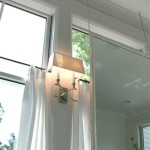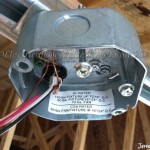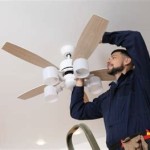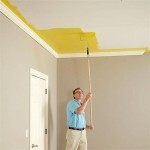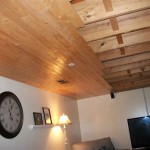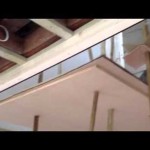Understanding AC Vents in Ceilings: A Comprehensive Guide
Air conditioning (AC) vents are essential components of a residential or commercial HVAC (Heating, Ventilation, and Air Conditioning) system. Their primary function is to distribute cooled or heated air throughout a building, ensuring a comfortable and consistent indoor climate. When integrated into the ceiling, AC vents offer several advantages in terms of aesthetics, air distribution efficiency, and space utilization. This article provides a detailed overview of AC vents in ceilings, discussing their types, installation considerations, airflow management, and maintenance requirements.
Ceiling-mounted AC vents contribute to a more uniform temperature distribution throughout a room. Since cool air naturally descends and warm air rises, vents positioned in the ceiling effectively leverage these natural convection currents. This placement minimizes hot and cold spots, creating a more balanced and comfortable environment. Furthermore, ceiling vents are generally less obtrusive than wall-mounted or floor-standing units, blending seamlessly into the architectural design of a space. By keeping the vents out of direct line of sight, they contribute to a cleaner and more aesthetically pleasing interior.
The selection of appropriate AC vents for a ceiling installation requires careful consideration of several factors, including the size and layout of the room, the desired airflow patterns, and the overall aesthetic goals. Different types of vents are designed to achieve specific air distribution patterns, and choosing the correct vent type is crucial for optimal system performance. Moreover, the size of the vent must be appropriately matched to the airflow requirements of the space to prevent issues such as insufficient airflow or excessive noise.
Types of AC Vents for Ceilings
A variety of AC vent types are available for ceiling installations, each with unique characteristics and applications. Understanding the differences between these types is essential for selecting the best option for a given space. The most common types include:
Round Diffusers: These vents are characterized by their circular design and typically feature adjustable louvers or baffles that allow for directional control of the airflow. Round diffusers are often used in residential and commercial settings due to their versatility and aesthetic appeal. They provide a 360-degree airflow pattern, making them suitable for distributing air evenly across a wide area. The adjustable louvers allow occupants to modify the airflow direction to suit their preferences.
Square or Rectangular Diffusers: These vents feature a square or rectangular shape and are commonly used in commercial and industrial applications. They offer a more focused airflow pattern compared to round diffusers and are often used in areas where directional control is important. Square diffusers can be configured with various louver patterns to achieve different airflow characteristics. Some models feature adjustable blades that allow for precise control of the airflow direction and volume.
Linear Diffusers: These vents are characterized by their elongated design and are often used in spaces with long, narrow dimensions. They provide a consistent airflow pattern along their length, making them suitable for hallways, corridors, and perimeter zones. Linear diffusers can be integrated seamlessly into suspended ceilings, creating a clean and modern aesthetic. They are often used in architectural applications where a minimalist design is desired.
Perforated Diffusers: These vents consist of a perforated panel that allows air to diffuse evenly across a wide area. They are often used in environments where a draft-free air distribution is required, such as offices, classrooms, and healthcare facilities. Perforated diffusers provide a gentle and uniform airflow, minimizing the risk of discomfort or temperature stratification. They are also effective at reducing noise levels associated with air distribution.
Grille Diffusers: These vents feature a grille-like design and are often used in return air applications. They allow air to be drawn back into the HVAC system for recirculation. Grille diffusers are typically less visually obtrusive than supply air diffusers. The grille pattern can vary depending on the specific application and aesthetic requirements. They are often used in conjunction with other types of diffusers to create a balanced and efficient air distribution system.
Installation Considerations for Ceiling AC Vents
Proper installation of ceiling AC vents is crucial for ensuring optimal system performance and preventing issues such as air leaks, noise, and drafts. The installation process involves several key steps, including:
Location Selection: Determining the optimal location for ceiling AC vents is essential for achieving uniform air distribution. Factors to consider include the size and layout of the room, the location of windows and doors, and the presence of any obstructions. Vents should be positioned to provide adequate coverage of the entire space, avoiding areas that are prone to hot or cold spots. It is generally recommended to place vents near exterior walls or windows to counteract heat gain or loss.
Ductwork Connection: The AC vent must be properly connected to the ductwork to ensure a secure and airtight seal. Leaks in the ductwork can reduce the efficiency of the HVAC system and lead to uneven temperature distribution. The connection should be made using appropriate connectors and sealing materials to prevent air leakage. The size of the ductwork should be matched to the airflow requirements of the vent to ensure proper performance.
Secure Mounting: The AC vent must be securely mounted to the ceiling to prevent it from falling or vibrating. The mounting hardware should be appropriate for the ceiling material and should be installed according to the manufacturer's instructions. For suspended ceilings, the vent may need to be supported by additional bracing to prevent sagging or movement.
Insulation: Insulating the ductwork and vent connections can help to prevent condensation and heat loss. Insulation is particularly important in areas with high humidity or extreme temperatures. The insulation should be properly installed to create a continuous barrier against heat transfer and moisture.
Testing and Balancing: After installation, the AC vent should be tested to ensure that it is functioning properly. The airflow should be measured to verify that it is within the specified range. The system may need to be balanced to ensure that all vents are delivering the correct amount of air. Balancing can be achieved by adjusting the dampers in the ductwork or by using adjustable vents.
Airflow Management and Maintenance
Effective airflow management is essential for maximizing the performance and efficiency of ceiling AC vents. This involves controlling the volume and direction of airflow to achieve optimal comfort and energy savings. Regular maintenance is also crucial for keeping the vents clean and functioning properly.
Airflow Adjustment: Many AC vents feature adjustable louvers or dampers that allow occupants to control the volume and direction of airflow. Adjusting the louvers can help to direct air away from areas where it is not needed or to focus airflow on areas that are particularly hot or cold. Dampers can be used to balance the airflow between different vents in the system. Experimenting with different airflow settings can help to optimize comfort and energy efficiency.
Airflow Obstructions: Ensuring that the airflow from ceiling AC vents is not obstructed is crucial for maintaining proper air circulation. Furniture, curtains, and other objects can block airflow and create hot or cold spots in the room. It is important to position furniture and other items in a way that allows for unobstructed airflow from the vents. Regular checks should be performed to ensure that no obstructions are present.
Regular Cleaning: Ceiling AC vents can accumulate dust, dirt, and other debris over time, which can reduce airflow and negatively impact air quality. Regular cleaning is essential for maintaining optimal performance and preventing health problems. The vents should be cleaned at least once a year, or more frequently in areas with high levels of dust or pollen. The cleaning process typically involves removing the vent cover and washing it with soap and water. The ductwork should also be inspected and cleaned if necessary.
Filter Replacement: The air filter in the HVAC system plays a crucial role in maintaining air quality and protecting the system from damage. The filter should be replaced regularly, typically every one to three months, depending on the type of filter and the level of air pollution. A dirty filter can restrict airflow, reduce efficiency, and increase the risk of system failure. It is important to choose a filter that is appropriate for the HVAC system and the desired level of filtration.
Professional Inspection: Regular professional inspections of the HVAC system, including the ceiling AC vents, are recommended to ensure that the system is functioning properly and efficiently. A qualified HVAC technician can identify potential problems and perform necessary repairs or maintenance. Professional inspections can help to extend the life of the system and prevent costly breakdowns.
In conclusion, ceiling AC vents are a vital component of modern HVAC systems, offering efficient and aesthetically pleasing air distribution. Understanding the different types of vents, installation considerations, and airflow management techniques is crucial for optimizing system performance and ensuring a comfortable and healthy indoor environment. Consistent maintenance practices, including regular cleaning and filter replacement, are essential for prolonging the lifespan of the vents and maintaining optimal air quality. Selecting the appropriate vent type, ensuring proper installation, and implementing effective airflow management strategies can significantly enhance the overall efficiency and effectiveness of the HVAC system.

Ceiling Ac Vents Pros And Cons Aire Serv

Air Conditioning Vents Replacement Everything You Need To Know Logicool

3 Ways To Fix Water Stains On Your Ceiling Air Conditioning Vents Baylor Heating Inc

The Benefits Of Using Ceiling Hvac Vents

Ceiling Ac Vents Pros And Cons

How To Open And Close Ceiling Air Vents

Ducted Air Conditioning Vents Quality Service

Changing All My A C Heating Ceiling Vents For Better Airflow Between Naps On The Porch

How To Move An A C Vent Hunker

How To Replace Your Ac Vent Covers Clf Services
Related Posts

